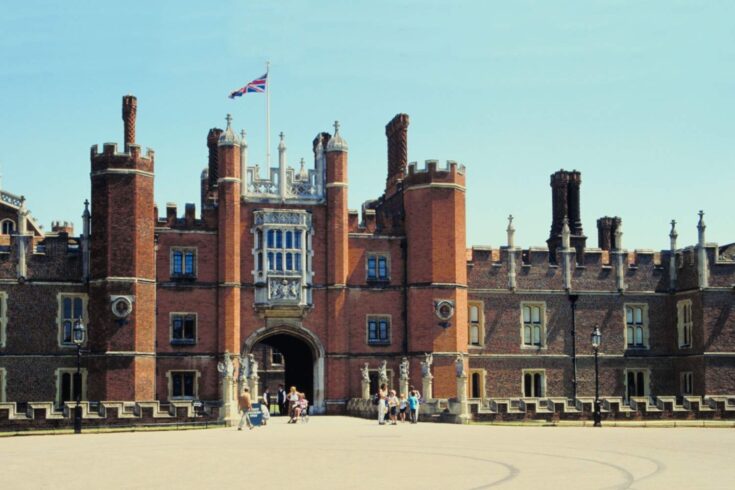When you visit the internationally important buildings managed by Historic Royal Palaces (HRP), including the Tower of London, Kensington Palace and the Banqueting House in Whitehall, it isn’t like going round a museum. The extraordinary Tudor tapestries at Hampton Court, for example, aren’t in environmentally-controlled cases: they’re out on open display, in rooms that look much as they did in Henry VIII’s day.
That’s great for visitors, who get to see objects up close, often in their original settings. But it makes things difficult for HRP’s conservation and collection care staff, whose job it is to look after more than 60,000 historic artefacts – from baroque wall paintings to state beds. How do they ensure that objects are not being damaged (for instance by light or pollution), so that they can be enjoyed by future generations?
About the project
HRP’s in-house scientific laboratory, set up some 30 years ago, analyses objects to show whether they are deteriorating, and also to learn more about what they’re made of and where they’ve come from. This information helps tell the stories of the objects. Over time, HRP has built a distinguished reputation in the field of heritage science and conservation research.
But the HRP lab, which began by investigating historic textiles, was being asked to carry out a wider and wider range of work. At the same time, technology was developing, threatening to leave HRP’s research infrastructure obsolete. An upgrade was badly needed.
“Our equipment was outdated,” said Dr Constantina Vlachou-Mogire, HRP’s Conservation Science Manager. “We were having to commission out our analytical work, which was expensive.”
As an independent charity, HRP receives no funding from central government or the Crown. On top of this, the COVID-19 pandemic led to a significant drop in income from visitors, making it unlikely that there would be funds to invest in new equipment.
But as an independent research organisation, HRP was eligible to apply for research funding. The Arts and Humanities Research Council’s Capability for Collections fund, part of UKRI’s World Class Labs funding, made an award of £970,000 to HRP to upgrade its scientific laboratories.
The upgrade, which was completed in July 2021, massively boosts HRP’s capability, and demonstrates the importance of research infrastructure for arts and humanities organisations – it’s not just scientific bodies that need expensive pieces of equipment. At the same time, it shows the power of capital funding for independent charities.
According to Vlachou-Mogire: “We had no opportunity before to apply for infrastructure funds from the research councils. But with UKRI’s Capability for Collections fund we had a rare occasion to access large-scale capital investment to upgrade dated equipment.”
Impacts of the project
The new equipment in HRP’s lab includes a scanning electron microscope, allowing materials to be examined much more closely. Many of the other new analytical instruments are portable, so they can be used across all of HRP’s sites. They also permit investigations that are non-invasive, without the need to take samples.
Many of the new high-performance microscopes also include cameras for examining objects and recording their condition, to show how they may be changing over time. Images can also be shared with conservation experts around the world.
Pieces of equipment are already contributing to ongoing projects. One of the projects is analysing the historic textiles at Hampton Court so they can be reverse engineered, allowing researchers to rediscover lost methods of natural dying, weaving and patterning. These methods could be an inspiration to today’s designers and craftspeople.
HRP is also helping with a five-year project to analyse Rubens’s paintings on the ceiling of the Banqueting House, using visible, infrared and ultraviolet light to examine and record their losses, cracks, dirt and areas of overpainting. This helps to show how the paintings might be deteriorating, how they were originally made, and how they originally looked.
For Vlachou-Mogire, all this ultimately helps people feel connected to the past. “It stirs the spirits of our visitors,” she says.
Opening up our heritage also helps to draw visitors to the UK, bringing huge economic benefit. And it helps us all to learn more about this country’s history and its past inhabitants, through the objects and art that they made and used.
“There are so many potential applications for our new pieces of equipment,” she enthuses. “We can’t wait to start using them all.”
Find out more
Read more about Historic Royal Palace’s science capability on their website.
Top image: Hampton Court Palace. Credit: Getty Images.

